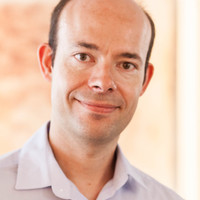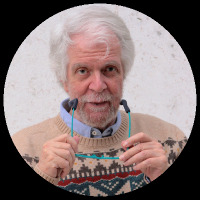
Martina Renzi
University College London, UCL Qatar, Scientific Project Manager, QM-UCL Qatar Cultural Heritage Law Project
Related Authors
Noel B. Salazar
KU Leuven
Simon Werrett
University College London
Alejandra B Osorio
Wellesley College
Nic Ryder
Cardiff University
Philipp Wolfgang Stockhammer
Ludwig-Maximilians-Universität München
Marta Diaz-Guardamino
Durham University
Manuel Fernández-Götz
University of Oxford
Miljana Radivojević
University College London
Armando Marques-Guedes
UNL - New University of Lisbon
Enrico Cirelli
Università di Bologna
InterestsView All (11)










Uploads
Papers by Martina Renzi
A partir de esta evocadora imagen, el presente volumen propone al lector un viaje al tiempo histórico del Tesoro de Aliseda, complementario de otro anterior dedicado al tiempo de su descubrimiento y su historiografía. Dicho recorrido, no exento de riesgos, pretende aproximarse a uno de los aspectos peor conocidos de estas célebres joyas: su contexto arqueológico y su dimensión político-territorial. Destruido por el carácter azaroso del hallazgo y su parsimoniosa gestión arqueológica, el contexto del tesoro aliseño se ha relacionado indistintamente con la tumba de una dama, con una ocultación e incluso con un santuario. En función de los resultados obtenidos del laborioso estudio llevado a cabo entre 2011-2014 por un amplio equipo investigador, se propone una nueva hipótesis que sitúa las alhajas aliseñas en un singular paisaje ritual y las vincula con la pareja aristocrática sobre la que pudo gravitar la celebración periódica del equinoccio de primavera; todo ello dentro del inestable panorama sociopolítico que dominó la periferia septentrional de Tartessos entre los siglos VII-VI y V a.C. Excavaciones, prospecciones arqueológicas y estudios analíticos diversos fundamentan esta nueva lectura del Tesoro de Aliseda que, si bien contribuye a despejar en parte la incógnita sustanciada en la “X” de Cabré, plantea otras que el futuro investigador deberá afrontar.
The settlement and the necropolis of El Calvari (El Molar, Tarragona), dated between the end of the LateBronze Age and the Early Iron Age, provided various copper-based objects and melting wastes. The archaeological site is located in a mining district, the Molar-Bellmunt-Falset (MBF) area, which presents rich deposits mainly of non-argentiferous lead and copper. Lead isotope analyses performed on some lead-based materials recovered from El Calvari show that these mines were already being exploited at this time. However, lead isotope analyses of the copper-based metals indicate that neither the ones from the site nor those from the necropolis can be related to local mineral resources. Indeed, a great part of these items originates from the Linares mines (Jaén) and, in a smaller part, from mines in the Almería province. In this paper we will discuss arguments supporting the possibility of import of ingots or of finished objects as part of the Phoenician trade in northeastern Iberia.
The settlement and the necropolis of El Calvari (El Molar, Tarragona), dated between the end of the Late
Bronze Age and the Early Iron Age, provided various copper-based objects and melting wastes. The
archaeological site is located in a mining district, the Molar-Bellmunt-Falset (MBF) area, which presents rich
deposits mainly of non-argentiferous lead and copper. Lead isotope analyses performed on some lead-based
materials recovered from El Calvari show that these mines were already being exploited at this time. However,
lead isotope analyses of the copper-based metals indicate that neither the ones from the site nor those from
the necropolis can be related to local mineral resources. Indeed, a great part of these items originates from
the Linares mines (Jaén) and, in a smaller part, from mines in the Almería province.
In this paper we will discuss arguments supporting the possibility of import of ingots or of finished objects as
part of the Phoenician trade in northeastern Iberia.
Resumen
El yacimiento de El Calvari (El Molar, Tarragona), fechado entre finales de la Edad del Bronce y la I Edad del
Hierro, ha proporcionado diversos objetos de base cobre y algún resto de fundición. El yacimiento se localiza
junto a las minas de galena (no argentífera) y de cobre dentro del distrito Molar-Bellmunt-Falset (MBF). Los
análisis de isótopos de plomo de materiales relacionados con la metalurgia del plomo señalan su explotación
en este periodo. Sin embargo, ninguno de los objetos de base cobre (ni del poblado ni de la necrópolis) se
puede relacionar con el aprovechamiento de minerales locales. La mayor parte del metal se identifica con una
procedencia del área minera de Linares, y en menor medida con minas en la provincia de Almería.
En el artículo se discuten los argumentos a favor de un comercio de metal, ya sea de lingotes o de objetos
acabados, vinculado a la actividad comercial fenicia en el noreste de la Península Ibérica.
CONTEXTOS
Los yacimientos celtibéricos del Alto Tajo y Alto Jalón: el I Milenio a.C. en la Meseta Oriental.
María Luisa Cerdeño
Plaza de Moros y los recintos amurallados carpetanos.
Dionisio Urbina
El final de la Edad del Hierro: el hábitat fortificado del Cerro de la Gavia
Jorge Morín, Dionisio Urbina, Francisco J. López Fraile, Marta Escolà, Amalia Pérez- Juez, Ernesto Agustí y Rafael Barroso
NUEVOS YACIMIENTOS
Hoyo de la Serna, poblado y necrópolis de los inicios de la II Edad del Hierro en la meseta de Ocaña.
Dionisio Urbina y Catalina Urquijo
Cerro Colorado, una necrópolis de los primeros poblados de la II Edad del Hierro.
Dionisio Urbina y Catalina Urquijo
La Guirnalda: un yacimiento de la Edad del Hierro en la provincia de Guadalajara
Ernesto Agustí, Dionisio Urbina, Jorge Morín, Ruth Villaverde, Antxoka Martínez Velasco, Enrique Navarro, Rui de Almeida, Francisco J. López Fraile y Laura Benito
LA CULTURA MATERIAL
Imágenes de la Segunda Edad del Hierro en el Centro Peninsular.
Dionisio Urbina
Estudio de material cerámico en el yacimiento del Cerro de la Gavia, Villa de Vallecas (Madrid).
Jorge Morín y Dionisio Urbina
Conjunto cerámico de una estructura doméstica de la II Edad del Hierro en el yacimiento de la Guirnalda (Quer, Guadalajara).
Sandra Azcárraga, Jorge Morín y Dionisio Urbina
Estudio de la industria lítica en el yacimiento del Cerro de la Gavia, Villa de Vallecas (Madrid)
Germán López y Jorge Morín
TÉCNICAS APLICADAS
Zoorarqueología. La fauna en la Primera Edad del Hierro.
José Yravedra Sainz de los Terreros
Paleoambientes y dinámica antrópica en la Meseta Sur (Madrid) durante la I y II Edad del Hierro.
José Antonio López y Sebastián Pérez Díaz
Estudio arqueobotánico de Las Camas (Villaverde, Madrid): un ejemplo de
interdisciplinariedad para el conocimiento del paisaje vegetal y los usos de las plantas en la Meseta durante el 1er Milenio a.C.
Ethel Allué, Dan Cabanes, Isabel Expósito, Itxaso Euba, Anna Rodríguez, Mario Casas y Francesc Burjachs
INTERPRETACIÓN, DIVULGACIÓN Y DIFUSIÓN
De la arqueología al Patrimonio arqueológico: cuestiones a debate.
Isabel Baquedano
Ética frente a los medios. Destruir y conservar con criterio. El yacimiento de Cerrocuquillo como ejemplo (Villanueva de la Sagra- Toledo).
Montserrat Cruz, Alicia Torija e Isabel Baquedano
Museos Arqueológicos del siglo XXI. El Museo Arqueológico de la Comunidad de Madrid y la difusión de la Edad del Hierro.
Antonio F. Dávila
La utopía del acondicionamiento del Cerro de la Gavia. Un viaje al pasado desde el paisaje postmoderno.
Jorge Morín y Esperanza de Coig O’Donnell
Modelización en 3D como método de investigación y conocimiento de las arquitecturas de la Edad del Hierro.
Francisco J. López Fraile"
The metallurgical remains presented in this chapter show that the entire production sequence from the smelting of sulphidic ore to metal was carried out at the Almyras workshop. According to the archaeological evidence available, it was a small-scale copper production site where no evidence for metal refining or manufacture of finished objects has been documented; raw impure copper seems to be the final product of the metallurgical process carried out at Almyras.
واصل المعهد الألمانى مشروع بحثة الاركيومترى" وقائع الحياة" فى المدينة الشمالية الغربية القديمة (مقطع 2) بإليفنتين. نفذت البعثة موسمين للحفائر بين خريف 2015 حتى صيف 2016، وموسم لدراسة المكتشفات. كما استأنف المعهد السويسرى الحفائر فى الأبنية الواقعة إلى جنوب قدس أقداس حكا إيب فى إطار دراسته لعمارة مدينة الدولة الحديثة على جزيرة إليفنتين. حيث تركز العمل فى منطقة معبد خنوم لدراسة مناحى مختلفة للمعبد المتأخر، وحدوده، وأبنيته ( مقطع3).
إضافة إلى تنفيذ مشاريع أخرى تهدف إلى دراسة مجموعات القطع الأثرية. أنهى المعهد الألمانى دراسة كتل تحمل مناظر تعود للدولة الحديثة من معبد خنوم( مقطع 4). كشفت البعثة أثناء إزالة الرديم عن لوحة لسنوسرت الثالث( مقطع5). واستمرت دراسة زخارف معابد إليفنتين التى تعود للعصر اليونانى الرومانى (مقطع6). كما استأنف المعهد السويسرى أعمال صيانة وإعادة بناء معبد أوزيريس نسمتى (مقطع 7). ونفذ المعهد الألمانى بالتعاون مع المعهد العلمى الفرنسى للآثار الشرقية مشروع لدراسة البيئة المحيطة وقطع تعود لعصور مبكرة من تاريخ إليفنتين، وذلك بتحليل دور المستوطنة( مقطع 8)، كما نفذا مشروعا لدراسة قطع الصوان واستخدامتهم (مقطع 9).
بذل المعهد الألمانى للآثار جهودا كبيرة بالتعاون مع تفتيش آثار أسوان، ومتحف النوبة هذا الموسم لتحسين العلاقة بين الآثريين، وسكان منطقة أسوان بتدريب الزملاء المحليين العاملين فى مجال الآثار والعلاقات العامة( مقطع 10-11).
Handed in to the Ministry of Antiquities in Egypt for publication in ASAE.
In the settlement the DAI continued its archaeometric project “Realities of Life” in the ancient northwestern town (section 2). Between autumn 2015 and summer 2016, two seasons of excavation and one study season dedicated to the finds were conducted. The Swiss Institute resumed the excavation of a building to the south of the sanctuary of Heqaib in the framework of its study of the New Kingdom town of the island. In the Khnum temple area work concentrated on various aspects of the late temple, its precinct and its furnishings (section 3).
In addition, several projects were conducted aimed at the study of objects and object groups. The DAI completed the investigation of the relief blocks from the New Kingdom temple of Khnum (section 4).
During the clearance of debris a stela of Senwosret III was found (section 5). The study of the decoration of the Greco-Roman temples of Elephantine was continued (section 6). The Swiss Institute continued the conservation and rebuilding of the temple of Osiris Nesmeti (section 7). In cooperation with the IFAO the DAI conducted a project on the context and objects of the early periods of the history of Elephantine through functional settlement analysis (section 8) and a project on flint objects
and their functional analysis (section 9).
In addition the DAI, in cooperation with the Aswan inspectorate and the Nubian Museum, made major efforts this season to improve the relationship between the archaeologists and the inhabitants of the
area of Aswan and to provide training for our local colleagues in archaeological fieldwork and public relations (section 10–11).
Handed in to the Ministry of Antiquities in Egypt for publication in ASAE.